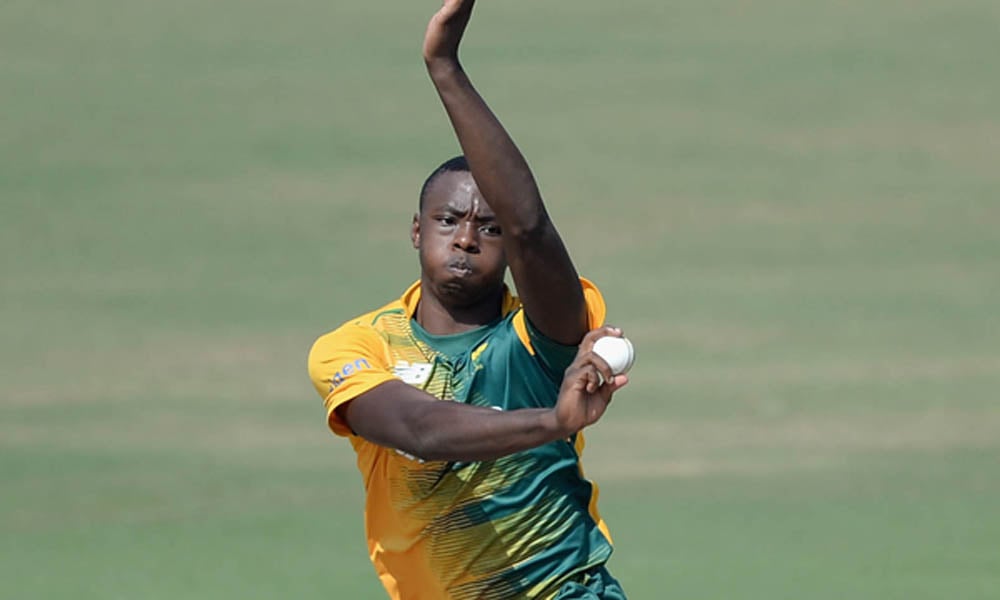Ashwell Prince
Sports Minister Fikile Mbalula’s announcement this week that prominent sporting codes may not bid to host international events is only the latest contretemps in a long line of rows between politicians and sports administrators.
Ironically, it was the ANC that pushed for South Africa’s readmittance to world sport in the early 1990s, long before the administration of most sports was even remotely transformed.
As a government, the ANC has consistently been impatient to see teams that reflect how the country looks – particularly in rugby and cricket.
Now a scorecard called the transformation barometer has been created, and the minister has used the result of this first report to prohibit rugby, cricket, netball and athletics from bidding to host international events. Mbalula has promised to revisit his decision based on the scorecard for 2016-2017.
National selectors and coaches have often argued that their hands are tied because the level below them is not producing enough black players to choose from. Former Proteas cricket coach Mickey Arthur wrote in his book Taking the Mickey that the six provincial presidents responsible for his ousting in 2010 had a total of 10 black Africans registered to play professional cricket among them.
Cricket South Africa (CSA) has since introduced quite radical quotas in first-class cricket (six “players of colour” per team, three of whom must be “black Africans”) and even insists that for club teams to qualify for the national championships, they must field two players of colour, one of whom must be “black African”.
CSA has also started a programme to work in black areas with regional performance centres and hubs. Universities are being roped in to help keep talented black cricketers active and involved after school.
It is that level, schools, that is decisive. A word often bandied about is “academy”, a loose term that encompasses everything from a few extra practices a week to a fully fledged full-time programme covering everything from nutrition to biokinetics.
The reality is that cricket and rugby already have academies, dozens of them, in the form of the excellent schools that organise thousands of fixtures every week.
A mistake often made is to imagine that only a few elite schools are supplying talent that goes on to represent South Africa. Although it is true that three Afrikaans (government) boys’ schools have produced 15 Proteas in the modern era, it is also true that at least 70 schools have produced at least one Protea across all formats of the game (Test, limited overs and T20).

Kagiso Rabada attended St Stithians in Jo’burg. (Gareth Copley, Getty)
Statistician Andrew Samson has calculated that Protea caps have come from 85 schools, but two of these are foreign and some were counted twice because a player moved schools while at high school.
So it would be fair to assume a total of 73 schools for the 150 players who have been awarded Protea colours. That is a very broad reach and suggests that planners should pause before rushing to judgments about where to spend money.
Although the elite (all-boys’ and private) schools tend to dominate selection for Test matches, 35 co-educational state schools account for 42 Protea caps overall.
The most recent black African Protea selections attended private schools, but the overall mix since unity shows tremendous diversity. Temba Bavuma (St David’s), Kagiso Rabada (St Stithians) and Aaron Phangiso (CBC Pretoria) may represent a new trend.
But consider that three Proteas attended state boys’ schools (Victor Mpitsang, Makhaya Ntini and Monde Zondeki; Grey College and Dale College) and two went to co-ed state schools (Thami Tsolekile and Lonwabo Tsotsobe; Pinelands and Westering). Another two attended school where they were born: in Motherwell, Port Elizabeth (Mfuneko Ngam; Douglas Mbopha High School) and Welkom (Thandi Tshabalala; Thotagauta Secondary School).
Lancashire’s 2015 opponents Glamorgan had probably not heard of St Thomas Senior Secondary (Ashwell Prince’s school), nor Gelvandale and Otto du Plessis (the high schools attended by Alviro Peterson), but the two Port Elizabeth old boys managed to put on a record partnership of 501 for Lancashire, despite their alma maters not being fashionable.
Nine schools in traditionally coloured areas have produced 13 Proteas between them. So, if the township statistics (three schools, three players) are added to those of the coloured schools (nine schools, 13 players) and the state co-ed schools (35 schools, 45 players), you have an impressive 47 “ordinary” schools providing 58 Protea caps.
The key point here is that these are not expensive “elite” schools – they are neighbourhood schools with cricket programmes, a fixture list and enthusiasm for the game.
Some of them are more ambitious than others and some are struggling, but a small intervention could make a difference: an extra coach or money for covers would go a long way. A bursary (or some support) to get talented young players into one of these schools would be far less expensive than a bursary to attend an elite school.
Of the boys’ schools, only Grey College (Mpitsang) and Dale College (Ntini and Zondeki) have black African Proteas among their alumni.
Getting the best black African cricketing talent into one of these schools might still be a good investment, but there are many other schools where success can be achieved.
The Morkel brothers and Tertius Bosch went to school in Vereeniging; Brett Schultz and Robbie Peterson are Alexander Road High School (Port Elizabeth) old boys; Paul Harris attended Fish Hoek High School, and the Matthews brothers and Tsolekile went to Pinelands High School.
Some of the schools that have provided Proteas are in places quite far from big cities: Dundee, Tzaneen, Heidelberg, Fraserburg, Warmbaths and Cloetesville.
Enthusiasm for cricket can be found all over the country. The next Protea could come from any number of schools. How many of them will be black Africans remains to be seen.